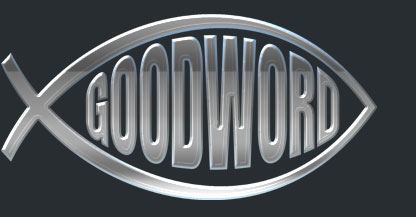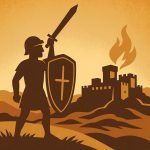| Host: | Brant Berglin |
|---|---|
| Guests: | James Ash |
| Quarter: | Allusions, Images, Symbols |
| Lesson: | 5 |
| Sabbath: | May 3rd, 2025 |
Opening Question
What good does human-led government provide us, and are there potential pitfalls?
Introduction
Scripture is clear about God wanting to be Israel’s sole leader; humans do poorly at ruling when they trust to their own abilities, thinking, plans, and effort. This is not to say that all humans have failed, but that leadership and rule inherently contain a power-dynamic that the broken, sinful heart can easily abuse. This can happen even when rulers believe in their causes or have the best of intentions. How does the history of Israel’s monarchy move power from their nation to others, and how does God work through them anyway as we head toward earth’s final events? That’s the topic for this study with Daniel 2 and 7, Revelation 12, and 13 as our Biblical focus.
Daniel 2
Read through Daniel 2, and notice who the main characters are in the drama. The Neo-Babylonian King Nebuchadnezzar and Daniel the exiled and now court-wiseman interact over a significant dream. The king’s mind turned toward the future, and no doubt, his own kingdom of which we learn in ch. 4, he was very proud. Would his kingdom last? Would the lands he conquered be added to? Daniel is not initially called in, but asks for time to seek God’s counsel and an answer to the king’s request. God grants it, and Daniel gives the king what he desires: a recap of the dream, and what it all means.
It’s noteworthy that Dan 2 has a language shift; the first chapter, and the last 5 of Daniel are all in Hebrew, the language of Daniel and his friends, and their homeland. But in chs. 2(vs. 4) through 7, the book shifts to Aramaic, the language of the Babylonians. This shift also suggests that the messages there are more Babylon-focused than Israel-focused.
The king’s vision portrays the nations in an unbroken sequence of major nations that would rule God’s people until the Kingdom of God would finally take over. This final kingdom would last forever, and would never be overthrown.
What do we learn about the permanence of earthly nations from this vision? What would Nebuchadnezzar have felt upon hearing Daniel’s interpretation?
The king sees the nations as parts of an image—an idol—something to be worshipped and prized, and for the king, a divine mandate. His gods, in his view (read Daniel 1:1-3), gave him power over Israel and their God. But as we see, Yahweh handed Israel over to Nebuchadnezzar, and the nations become part of God’s plan for Israel’s discipline.
The lesson points out how the image proceed from most valuable to least as it progresses through Babylon, Medo-Persia, Greece, Rome, and its divisions into the nations around the Mediterranean and beyond. It’s also significant to see how the various body-parts represent the nations pictured. For instance, the two arms of the silver represent the two nations of the Medes and Persians in alliance together. But there’s more: the metals progress from most to least malleable; this becomes important in ch. 4 (and ch. 7 referencing the lion with wings who has a human heart given to it) because it suggests that part of what makes Nebuchadnezzar like the head of gold is not just his wealth, but that he is refined like gold when he submits to God’s leadership and humbles himself.
What can we learn about God’s foreknowledge from Daniel 2? How does He regard the nations here? If the final empire is iron, but mixed with baked clay that is said to not adhere to one another up to the point of God’s eternal kingdom, what does that suggest about our earthly nations today? Should we expect to see a single, unified, and world-wide government that all people give allegiance to?
Daniel 7
Read Daniel 7, and then compare/contrast this chapter with Daniel 2. Note the similarities and differences. Who receives this vision? What becomes quickly apparent is that Daniel 7 covers the same kingdoms as ch. 2, only provides quite a bit more detail about the later kingdom(s) and kings, and especially a last-day religio-political power. Daniel sees predatory animals rising out of the “great sea,” the Mediterranean. This situates the vision geographically, and for Daniel, these nations around Israel and the middle-east are ravenous beasts feeding on small nations like his own.
The focal point of most of the text for this chapter is on the 4th beast—not described by known animals—and the iron teeth/bronze claws suggest Rome mixed with some of Greece. But even Rome isn’t the main point; rather it’s the spiritual/religious/national power that arises out of Rome in the form of a “horn” power. Many Christians who come from the protestant reformation heritage have equated the abuses of the professed Christian church of the middle ages with this horn, and its human head, the papal leadership of Rome. While this may seem politically incorrect, we must remember that God is not in the business of earthly perspectives of earthly nations, but a heavenly one.
To what degree are Christians susceptible to the lure of earthly and governmental power? Should the church wield political authority or rule? Can we use legislative decrees for religious means? What dangers exist for Christians in modern political activism? When should Christians seek out national influence?
Revelation 10
At the end of Revelation 10, John is invited to prophesy again about/concerning many nations. Seventh-day Adventists have self-identified with John’s eating of the little book (perhaps the book of Daniel, once sealed, but now “having been opened,”) and the sweet yet bitter experience of expecting Christ’s return and being disappointed. But the nations are not to be left out, God still has a calling for them. And if John is a symbol for the church in ch. 10 as it experienced the great disappointment, then he is also a symbol for the church’s evangelistic purpose until Christ returns.
Closing Comments
God is in control of the rise and fall of nations, but He cares for them, too!




